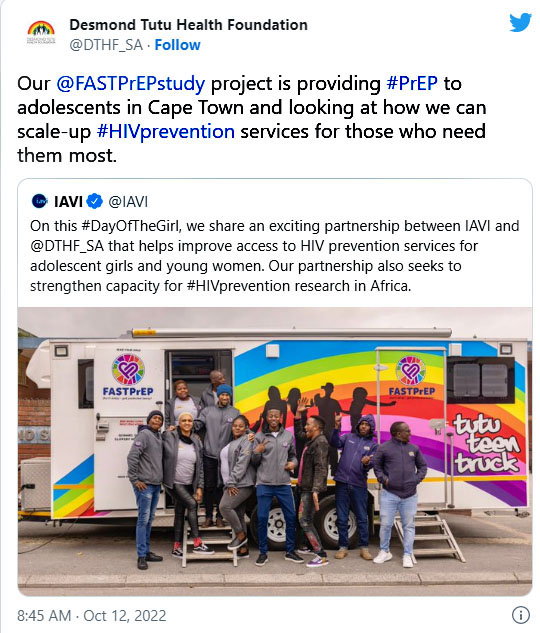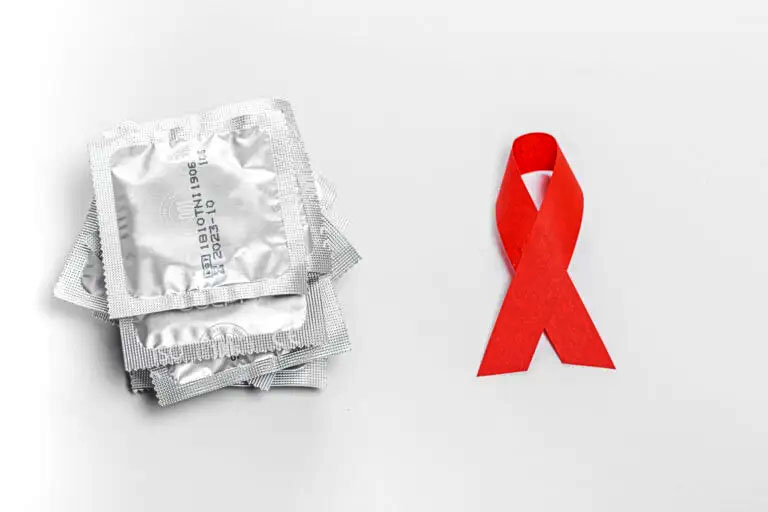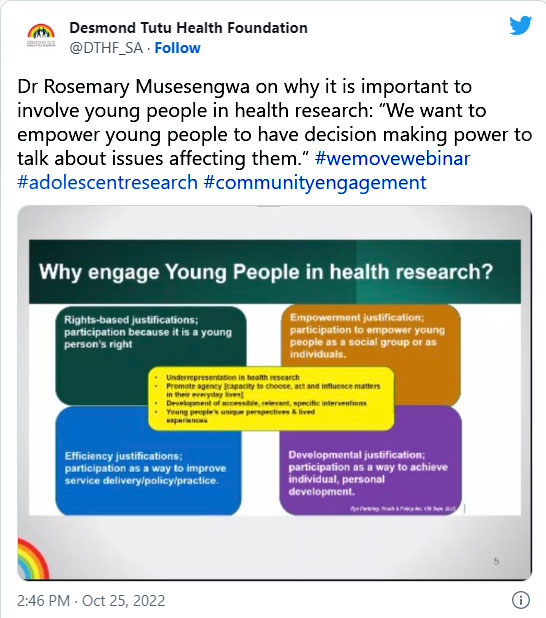SPOTLIGHT IN-DEPTH
Good sexual and reproductive health services on paper, but implementation gaps remain

Tiyese Jeranji takes an in-depth look at the current policy landscape and asks how well the implementation of the policies measures up to their lofty ambitions.
There has been a gradual increase in the number of adolescents visiting healthcare facilities in South Africa and in the number of adolescents giving birth in healthcare facilities from 2017 to 2020, according to a report by the United Nations Populations Fund (UNFPA).
“Likewise, there has been a decline in new HIV infection rates amongst adolescents,” says Precious Magogodi, programme specialist at UNFPA. “However, South Africa has seen an increase in the number of teenage pregnancies in some parts of the country and in particular during the Covid-19 pandemic. This has partly been attributed to the difficulties in accessing contraceptives during the lockdown.”
However, she says, there has been a drop in teenage pregnancies where “concerted efforts have been made by all stakeholders in teenage hotspot areas”.
The UNFPA report was an evaluation of South Africa’s National Adolescent Sexual and Reproductive Health and Rights Framework Strategy (2014-2019) and its implementation. As such, it provides a unique big-picture view of access to sexual and reproductive health services for adolescent girls and young women in South Africa.
Magogodi says it was found that the Strategy Framework enabled improved coordination, information sharing, and collaboration horizontally across key departments. “However, the limited vertical coordination from national down to provincial and district level meant that awareness of the strategy was poor and what was expected of departments to implement the strategy remained unclear,” she says.

What we have on paper
Approved by Cabinet in 2015 and steered by the Department of Women, Youth and Persons with Disabilities, the strategy was aimed at addressing the sexual and reproductive health needs of adolescents amid rising teenage pregnancies. But, as a webinar on reducing teen pregnancies hosted by the Health Systems Trust in September also highlighted — given the high number of teenage pregnancies in the country, sexual and reproductive health services for adolescent girls and young women are still inadequate.
Meanwhile, the National Department of Health has published its own National Integrated Sexual and Reproductive Health and Rights Policy (2019) aimed at promoting high-quality and safer reproductive health services and practices by women, men, and youth through informed choice and with a rights-based approach. Based on this policy, a package of service benefits for women throughout their reproductive lifecycle is defined.

Several Eastern Cape teenagers told Spotlight earlier they need better education campaigns and youth-friendly healthcare facilities to raise awareness about sexual health. (Photo: Marco Verch / Flickr / Spotlight)
But, says Dr Bandile Ndlazi, a public health specialist affiliated with Unisa, although how services ought to be provided and who these services are meant for is clearly defined on paper and guided by policies, in reality, adolescent girls and young women still find it difficult to access these services, especially at public clinics. Part of the reason for this is that they need youth-friendly services because staff attitudes are often not welcoming and they are not provided with the information they require.
Ndlazi says sexual and reproductive health is a “basic human right that can only be achieved by ensuring access to accurate information on safe, effective, and acceptable contraception — empowering individuals on how to protect themselves from sexually transmitted infections, and access to obstetric care when needed”. “Sexual health”, he says, “remains an essential part of an individual’s overall health and well-being”.
He says planning and resourcing any programme to address the gaps in providing sexual and reproductive health services, “requires a very practical mapping of SRH services to outline a better understanding of adolescent girls and young women, and those at higher risk for certain infirmities per district.” He also argues that the relevant information systems should be strengthened “for better implementation, monitoring and evaluation of SRH services”. (Ndlazi co-authored an article published in the SAMJ following a study where they mapped the sexual and reproductive health needs of young adolescents living with HIV in Gauteng.)
Filling the gaps
According to Funeka Mthembu, Project Manager at The Aurum Institute’s Rustenburg Clinical Research Site, while there are programmes and policies that are in place to help promote adolescent and youth-friendly services, there are still gaps.
“In order for us to know how we can improve, we need to understand what the barriers are to us providing these services. Little attention is given to the adolescent and youth’s sexual and reproductive needs, specifically the [providing of] appropriate information,” she says.
She tells Spotlight that healthcare providers need to be equipped with the necessary skills to provide youth-friendly services.
“An adequate number of staff within a facility need to be trained because you will find that in a facility only one or two staff members are trained and when they are not available, the services will not be available,” says Mthembu.
She also says one of the most important factors in providing youth-friendly services is providing a dedicated space for the youth to facilitate privacy and confidentiality. “For example, you will find that an adolescent girl may find it difficult to adhere to HIV treatment or make use of STI treatment services at the clinic because they have to queue with adults which makes them vulnerable to judgement and stigma,” she says.
Worrying numbers
Ndlazi says South Africa has not done well in ensuring the accessibility and uptake of sexual and reproductive health services among adolescents.
“This is evident by the current teenage pregnancy rate, which is at 1.4% for age 15 and eventually increases to 25% at age 16-19, with an average of 71 births per 1,000 adolescent girls and young women in the same age group. These results are indicating either poor access or limited use of SRH services due to unidentified barriers. HIV remains a second leading cause of death for adolescent girls and young women as this group is two to four times more likely to contract and be living with HIV compared to males in the same age groups,” he says.

Deputy Health Minister Dr Sibongiseni Dhlomo marched against unsafe abortions and reproductive health in Rustenburg. (Photo: DOH Twitter / Spotlight)
In June, deputy minister of health, Dr Sibongiseni Dhlomo, during the launch of a youth zone in Willowvale in the Eastern Cape, also highlighted some alarming figures.
Visit Daily Maverick’s home page for more news, analysis and investigations
“HIV incidence is at 30% amongst young people and the country has observed an alarming rate in the increase in teenage deliveries in health facilities, including for 10 to 14 years and 15 to 19-year-olds,” he said.
Mthembu says, “you may find that the districts report that facilities are implementing youth-friendly SRH services only to find that a limited number of those facilities are actually implementing. For example, the Aurum team in Rustenburg went to benchmark facilities reported by the district to implement the services, but when those facilities were visited, it was discovered that they were not implementing because of challenges such as not having enough staff and lack of dedicated space for the adolescents and youth.”
Lack of knowledge
Mthembu says knowledge about sexual and reproductive health and available services is still a challenge.
“According to the SA National HIV Prevalence, Incidence, Behaviour and Communication Survey (2017), only 36.1% of youth between 15 and 24 years had accurate knowledge of HIV transmission. Another study conducted in the Northern Cape amongst high school learners found that learners had 70% knowledge on STIs and only 12% on HIV and Aids. A study conducted in Eastern Cape among 15 to 24-year-olds found that 15.33% of youth did not know what STIs were,” she says.
“Fear and shame are factors that hinder youth from seeking sexual and reproductive health services. In our study on youth-friendly services (findings not yet published), the young women were afraid to report being engaged in sexual activities but would test positive for a STI/s, which would be inconsistent with their report,” she says.
Ndlazi echoes this and adds that many adolescents also receive misinformation.
“Social and structural barriers have created a wall in terms of information sharing, as most parents are still not comfortable discussing SRH with their children, resulting in peer and social media-acquired and age-inappropriate information being circulated. These missed opportunities by both parents and healthcare providers provide an opportunity for misinformation and gathering of myths for this group,” he says. Ndlazi says many women, for example, due to limited access to information only start using contraception after their first pregnancy, which is mostly unplanned.

Other barriers to accessing services, according to Mthembu, include the distance from facilities and some legal barriers such as the laws permitting the independent consenting of SRH services. “Requiring parental consent may prevent adolescents from accessing the services. Adolescents may be unable to disclose sexual activities to their parents and therefore are unable to access HIV testing services. Another potential legal barrier is the age at which children can consent to have sex and make use of SRH services. While the Children’s Act enables children to access some SRH services without consent, the Sexual Offences Act criminalises certain underage sex, therefore, the person who has knowledge of the underage sex has to report to authorities,” she says, adding that this could hinder access for those who break the stipulated laws. “These laws have an impact on adolescent and young girls who will most likely have older partners,” she says.
Added to this are the opening and closing times of facilities that do not accommodate school-going children, “therefore adolescents cannot access the services at the times that they are able to, which is mostly after school.
Dedicated youth services?
Earlier this month, during an HIV and Adolescent Workshop in Cape Town, academics, experts, and young people put heads together on how to manage HIV and other health issues affecting adolescents.
Junior mayor of Cape Town Leah Tshotwana said young people have suggested the idea of tailored services in which they receive service directed at their specific age group. “Seeking service from a youth clinic feels more reassuring and comfortable as these resources are specially adjusted to fit the needs of youth in this specific developmental stage,” she told Spotlight. “We want healthcare workers to focus on young people and encourage healthy behaviour and to listen to them.”
Mthembu believes standalone clinics that are separate health clinics/centre that is dedicated to adolescents and youth would be ideal as this eliminates most of the issues relating to access, such as stigma.
According to Ndlazi, healthcare providers created a perception of health facilities as a ‘no-go-area’ for adolescent girls and young women who access sexual and reproductive health services.
“We need to change this by redesigning our facilities to a more adolescent girl and young women-friendly environment within our healthcare facilities by using concepts such as youth zones that are less judgmental and accessible. In addition, we need to attract our adolescent girls and young women back to healthcare facilities by mobilising and creating awareness through education, community dialogues, and the promotion of family-focused interventions. There is still a need to engage with the department of education and school governing bodies on how to better provide SRH as part of the school health programme and remove barriers to access,” he says.

Efforts from health department
One solution touted by the health department is to ensure that more primary healthcare facilities have youth zones with tailored services for the youth.
According to the recently released department of health annual report, during the 2021/22 financial year, the department established 1,264 such youth zones intended to reduce HIV and teenage pregnancies among the youth. The target was to establish 1,600 youth zones.
According to health spokesperson Foster Mohale, the department has developed a comprehensive sexual and reproductive health and rights curriculum for healthcare workers at clinics with 14 modules. This is to improve access and sensitise healthcare workers.
Mohale says the department has facilities implementing youth zones in all provinces. “The department also shared SRHR information through its Bwise platform, whereby adolescents and youth are given correct information on where to go if they need SRHR services.” He says the department has also been conducting youth dialogues throughout the country, educating and addressing myths among adolescents and youth on sexual and reproductive health.
When asked how the department knows if they are providing adequate sexual and reproductive health services and how they know the service is reaching the targeted people, Mohale only says, “The department monitors the uptake of different methods of contraceptives.” DM/MC
*This article was published by Spotlight – health journalism in the public interest.




















 Become an Insider
Become an Insider
Comments - Please login in order to comment.